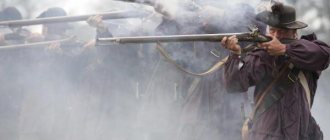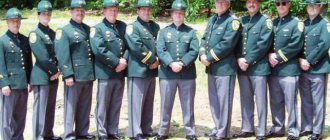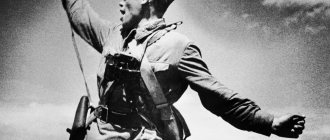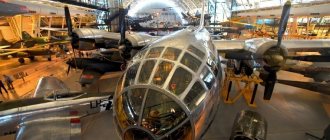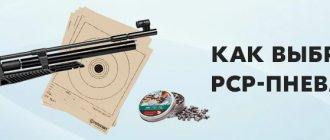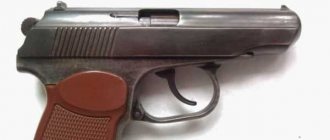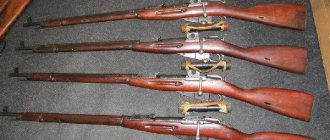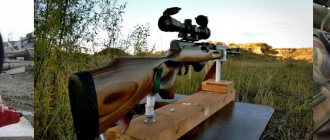Harness (also team) - several specially selected and driven horses or other draft animals harnessed together (a pair, three, four (or four), six), as well as a method of harnessing a horse or other draft animal into a cart.
The Russian Troika is the only multi-gaited team in the world. In the center of it is a horseman running at a trot. Harnessed on the sides, they gallop. This way horses get tired less and develop high speeds - 45-50 km/h.
How to unharness a horse
Usually in this case the actions occur in the reverse order in relation to the harness. It looks like this:
- First, the reins are untied and taken out.
- Undo the straps that connected the shafts to the saddle.
- Untie the supon, disconnect the arc and carefully remove it.
- The horse is taken out from the shaft, untied and disconnected from the harness.
- Remove the clamp, disconnect and remove the saddle.
Then the animal is wiped off the sweat; if it is winter and the horse is cold, they are covered with a blanket.
Harnessing a horse is quite a difficult task. To master it, to stop being a beginner at this, you need to do this lesson repeatedly
At the same time, it is important to remember that when harnessing you do not cause damage or cause chafing or other problems. If everything is done correctly, the horse will become a reliable assistant for its owner in life.
Types of harness
The harness must be of good quality and suitable for your pet. It is also necessary to know the types of harnesses, since their structure depends on this. In addition, regardless of the type of equipment, it must be lightweight and easy to repair.
Based on their purpose, sleds are classified into agricultural, traveling and transport sleds. The latter were used to transport people and goods, so they have many horses. For agricultural work, single- and double-horse harnesses are used. Traveling teams are ceremonial, and the number of horses in them could vary.
Harnesses also differ in the number of horses in them: single, double and multi-horse. In agriculture, a single one is usually used. There are two types of steam room: when the horses are harnessed side by side, or one behind the other.
Below we will talk about the different types of harnesses.
Single-horse
Single-horse harness can be either arc or non-arc. It is intended for one animal. The first type implies the presence of a bow, a supony, a collar, tugs, a nurse with a saddle, a shaft, a bridle with reins and a harness. In the arcless version, the harness takes on the brunt of the cart. There are also belt collars, shafts, collars with horse-drawn lobes and bridles with reins. Its second name is shaft-shaft, and it often uses short shafts attached to the saddle, and not to the clamp.
Line-by-line-drawbar
Line-and-drawbar harnesses are recommended for both double-horse and single-horse harnesses. Its task is to regulate the movement of the cart and its turning. The main component of the equipment is the drawbar. Very often, when working with two-wheeled agricultural machines, horses are damaged due to the pressure of the drawbar on the clamp. Therefore, it is worth putting a saddle on the horses and tightening the strings with a saddle. The performance of animals will increase significantly.
Line by line
The line harness is very simple, but inconvenient, since the cart is not always held in place when moving forward. The traction in this type of harness occurs due to the clamp and lines. It is recommended that this type of equipment be additionally equipped with brakes so as not to harm the horse.
Tachanochnaya
The cart type of harness was widely used until the 20th century. Nowadays it is very rare to see four horses and carts. The harness consists of lines and a drawbar. In this case, two horses are harnessed to a drawbar in the center, and the side horses are harnessed to lines attached to the wagons.
Combined
The combined type of harness is considered typically European. In this case, many horses are harnessed (on average 6-8). The harness combines a drawbar with lines and shafts
It is very important to select animals based on strength and height. For example, root rods are required to be strong and tall, since they restrain the crew
In pairs or threes with them there are harnessed horses, which are harnessed with lines. They are the ones who determine the turns of the cart. Outriggers are placed in front of the rootman. They also need to be harnessed with lines, as they set the direction of movement.
TSUG
The Zug horse harness is a German invention. Designed for gears with double offset. Currently, the train harness is almost never used anywhere. In it, horses walk in single file or in pairs, one after the other. In the Zug harness, a drawbar is used for pairs of horses. Two or one pair of root rods are harnessed to it. All other horses are portable.
Methods
There are several types of harness: with one horse, two, three or a multi-horse team. If you need to harness two horses, one of them becomes the root horse, and the other is tied (he is “fastened” to the root horse so that he runs alongside and helps pull the cart). When three horses are harnessed, the central one becomes the main one, and the other two become the trailing ones.
When more than three horses are harnessed, they are lined up in two more lines. If there are four of them, then two knights will be in the first line, and two more knights will be in the second. The quadriga (all four horses running in one row) is rarely used.
It is even rarer to find a harness in which the horses are drawn single file. This is usually used in circus performances. You can harness one or two horses yourself. For larger quantities, several people will be required. It is interesting that in the 18th century, Catherine II adopted a decree on which title and rank should ride in which carriage and with how many horses. For example, the general's carriage had to be harnessed from 6 to 10 horses at the same time.
Although, as mentioned above, this does not make practical sense. From the point of view of harness variability, the following types can be distinguished.
Shaft-arc
It is considered a purely Russian way of harnessing a horse. In Europe, this option is very rare. Ideal for harnessing a horse to a cart or sleigh. When using this method, the amount of necessary harness is significantly reduced. In particular, it is allowed not to use a harness and girth. This is the simplest version of the harness.
Drawbar
This is the name for those types of harness that do not use a bow, and often also a harness (or use a lightweight version of it). There is no specific set of harness items. This option is designed for field work. The clamp can be replaced by a belt design. It is most rational to use it when you need to harness 2 or 3 horses. If there are 2 of them, then the pole of the drawbar will be placed between it. And if 3, then one of the knights is placed in the first line.
Line-by-line-drawbar
This option is used when there is a long road ahead, or two horses need to be harnessed. The peculiarity of this method is that it uses such a part of the harness as a drawbar (a shaft connected into a single structure to the point where it is attached to the cart). This increases the animal's stability and reduces the risk of injury on steep slopes.
The shaft will be secured between the horses, and the split to the cart.
Shaft-and-line
In other words - English harness. This method is very common in European countries. Its peculiarity is that an arc is not used, and the shafts can be attached to the saddle.
Line by line
Another name for it is tyazh. The simplest type of harness used for agricultural work. The plow is harnessed in the same way.
Mixed
Different types of work and situations require different sets of harnesses. Often there is a need to combine several types of harnesses. For various purposes, horses can be harnessed to carts (often used to carry people along the streets), sleighs (used in villages or as entertainment on holidays such as Maslenitsa), carts (often found in villages) or agricultural objects (a plow, for example) .
We will give some recommendations for caring for your horse and harness.
- The harness should always be clean and lubricated. Otherwise, it becomes ossified from sweat and dirt.
- It is recommended to store accessories on wooden hangers (they are not subject to rust).
- The collar and saddle should be hung with the felt facing outward, this way the felt will ventilate faster and better.
- Leather parts are lubricated only after they have been cleaned of dirt.
- In inclement weather, the harness gets dirty more. Upon returning to the stable, be sure to clean the dirt.
- In order to make additional holes, you need to use a special punch. And under no circumstances should you do this with an awl or knife.
- The harness set is selected for each horse individually. Her nickname is written on the collar.
For information on how to harness a horse correctly, see below.
Selecting a team based on the number of horses
One team can have several horses at once. Depending on the number of horses, the teams have their own names. For example, two individuals harnessed behind each other are called a tandem. If horses walk next to each other, they form a pair.
A couple can have such horse harnesses as mixed and drawbar. If an individual needs to harness an agricultural device, then a trailing harness is used. Due to its high traction resistance, it eliminates the possibility of the gun rolling over and accidentally injuring the horse.
The three-horse team also includes different forms. The most popular is the Russian troika, which has a root in the middle and fastenings on the sides. There was another type of triplets - harnessing horses in single file, during which the rootman was behind the tethered individuals. Three-piece single file is best used for winter roads.
If there are four individuals, then you can create a team of two forms. In the first case, you need to place the horses in pairs one after another (outrigger and drawbar). This is a more classic quad. In the second case, the horse is in one line: the drawbars on the sides frame a pair of roots in a drawbar pair. This type of harness is called a cart or quadriga.
On the territory of Russia, the drawbar and Russian shaft-type harness are considered more common. At the same time, the shaft appeared earlier, but is now almost never used. Drawbar harnesses are still used in our country to this day. It appeared in the 17th century and spread among us as a result of the Polish-Lithuanian invasion.
Another type of harness of individuals is the five-piece. It is created by a pair of root players and three extensions in a line. Six horses are placed in a train of three pairs. A larger number of heads in a harness (seven or more) are not suitable for use on the farm. These types of harnesses are most often used at ceremonial processions or entertainment parades.
Today you can find a large number of types of harnesses and ways of placing a horse in them. With all this, if there are about six horses in one team, then such teams are used in household work. A large number of individuals in a harness most likely serve a decorative function rather than a useful one.
Horses are currently widely used in equestrian sports and competitions. There are even competitions that test the skill of handling harnesses. A correctly worn harness helps not only increase the productivity of an individual, but also maintain its health and strength.
Harnessing methods
There are several well-known methods for harnessing a horse. Each of them requires skill and experience. In Russia, the most popular types of harnesses are drawbar and shaft.
Shaft-arc method. Before harnessing one, two or more horses, it is important to check the sleigh or cart and the tugs on the clamp. The length of the tug should be adjusted so that the rider has the opportunity to tighten the pliers and attach the bow to the shafts
Then a bridle is put on the horse, a strap is tightened on the chin, and the bit is inserted into the mouth. If you have to harness a horse in winter, in frosty weather, it is recommended to warm the bit in your palms. After this, the saddle is put on, moving from the withers to the back. Next, the harness is straightened, and the mane and tail are taken out from under it and the collar.
Line-to-drawbar method . A pair of harnessed horses using the drawbar method is called a pair. This method is used on the farm for implements and carts with a drawbar. The cart for harnessing must have a single shaft (drawbar), which is located in the middle. Horses are fastened to it.
Five . A method suitable for harnessing six or more horses. Animals are placed in pairs. Pyaterik is used for ceremonial processions, performances, events, but is not used on the farm.
Types of harness
All options are divided into 3 groups according to scope of use:
- Agricultural.
- Traveling.
- Transport.
The harness is also divided into 3 groups according to the number of harnessed horses:
- Singles.
- Pairs. These harnesses are used to equip sleds.
- Multi-horse. Also used in sledding.
The following types of harness are considered the most popular:
- One-horse Russian. It is often called European harness.
- Line-by-line-drawbar. In such a harness you can use either one or two horses.
- Line by line. It is very easy to use, but is considered not good enough, since it does not protect the horse’s health. For traffic safety when using such a harness, it is recommended to equip the cart with a brake.
- Tachanochnaya. This is a very complex horse harnessing system. At one time it was very popular, but today it is not used at all.
- Combined team. This harness design came to us from Europe. It can be used with both lines and shafts.
The simplest in use and design are considered to be single-horse Russian and line harnesses.
Russian single-horse or arc
The main difference between this horse harness and others is the presence of an arch. It is made in the old-fashioned way from a single piece of wood. With its help, tugs hold the shafts.
In the old days there were specialists who made arcs. The fact is that making them was not easy: it was necessary to select and process them correctly in order to obtain a strong, elastic and lightweight element of the harness.
Russian single-horse harness consists of the following elements:
- Arc. It was described above.
- Clamp. One of the main elements of single-horse harness. It ensures the transfer of traction from the horse to the cart. Clamps come in different sizes. The length of this element is measured from the inner cushion at the top to the pincers. The width is measured between the tug holes. The clamp consists of such elements as: pliers, pillows, tugs, clamps, tire, supon, gort and lining. The clamp must be adjusted in size to a specific horse. After adjustment, it should fit snugly to the top of the animal’s withers, rest on the crest of the neck and press well against the shoulders. On the sides of the horse's body, the collar should rest on the muscles of the shoulder blades.
- Harness. This element covers the horse's body. Its task is to support the clamp during braking.
- Saddle. It is located slightly below the withers. It is entrusted with the task of absorbing shock loads on the animal’s back during movement. The saddle is adjusted to the size of the horse's withers.
- Cross-dealer. This element of the harness is located next to the saddle and holds the structure of the clamp, arc and shaft. In addition, it distributes weight evenly throughout the structure.
- Podbelly. Allows you to avoid sudden jerks of the collar and shaft when the horse is trotting or galloping.
- Bridle. As a rule, a snaffle model is used.
- Rein. This is an elongated version of the bridle. Used to control a horse from a carriage. The reins are attached to the bits. Previously, this element was made of leather. Now it is made from thick tarpaulin.
Line-by-line or arcless harness
Its main difference from the Russian single-horse harness is the absence of an arc. That is, the traction force is transmitted directly through the clamp. The latter is attached to the cart with straps.
The design of such a horse harness consists of:
- A clamp with horse-drawn eyelets to which the lines are attached.
- The lines themselves.
- Saddles.
- Girths.
- Interchangeable.
- Gorts replacing tugs
- Bridles.
- Reins.
The European version of this harness differs in that it does not have a collar. A curtain is used instead. This is a durable leather bib with rings, to which lines are attached using metal carabiners. The reins are passed through the neck rings and a special clamp on the saddles.
In the Russian and European versions of the line-by-line harness, the most important role is given to the harness. It is she who is entrusted with the task of uniformly distributing pressure throughout the horse’s body.
When the horse is properly equipped, the harness extends 5 cm below the ischial tuberosities. If it is raised above this level, it will constantly ride up and rub the animal’s rump. If it is lowered below the specified level, it will interfere with the horse's progress.
The length of the harness is chosen so that a palm can be placed between its side strap and the horse’s hips.
As for the thickness of the bib in the European version of the line harness, it should be at least 2.5 cm.
What are blinders?
Blinders are sometimes called eyecups or shields. Protective devices are special plates fixed in the horse's eye area. The shields block the view from behind and to the sides (or partially), so that people and passing vehicles do not fall into the horse’s field of view.
Limiting the viewing angle allows you to concentrate the animal's attention. Plates help you avoid distractions while moving in the right direction
This eliminates irritating environmental factors that could frighten the horse and cause panic.
The plates protect the horse's eyes from irritants such as wind, precipitation, and dust. Protective elements of the harness are used when several animals are placed in one harness. They are a necessary attribute for horses with a nervous and timid character.
Blinders on a horse's eyes are necessary due to the peculiarities of the animal's visual organs. The horse's viewing angle is almost 360°. Scientists have proven that 1 horse's eye covers more space than 2 human eyes. The animal is able to clearly distinguish distant objects, which is not typical for humans. Therefore, with any movement from the sides or from behind, the horse reacts sensitively, which affects its behavior.
A horse can not only be disturbed by objects and phenomena in the environment, but also irritated by the presence of the rider. If necessary, vision limiters are attached to the horse for safe riding. A blinkered horse does not react to movements from the sides and behind; eye cups allow him to remain balanced and calm.
The use of blinders was practiced in Ancient Egypt. As the design of the harness improved, new forms of protective equipment for the horse's eyes appeared. In knightly times, massive metal products were attached to the horse's muzzle. They not only limited visibility, but also served a protective function during battles.
Features of horse harness
Horses are freedom-loving and temperamental animals that cannot be subjugated to your will by force. To get along with them, people should be patient and caring, but also indicate their priority position. It is impossible to use roughness and pain in dealing with horses, so man had to come up with another way to control - this is how horse harness appeared.
For young animals, a lighter version of the harness is an element of education that serves to instill disciplinary skills. It is not for nothing that there is still a procedure for “taming” young animals. They ride the horse, putting a bridle and saddle on it for the first time. After this, he recognizes the person as his master and submits to him.
Dressage process
The horse is controlled using a system of belts and auxiliary parts, which are placed in a special order on the body. The harness is used both for riding and for traveling in a cart.
This type of equipment includes many elements that, depending on the specific situation, can be used in different combinations. For example, in order to pull a cart, a horse will have to be fully trained, but to take it to the viewing track at an exhibition, only a bridle is enough.
Leather harnesses on horses' faces
Most often, harnesses are made from good soft leather. Its quality plays a huge role, because the material comes into close contact with the animal’s body.
The harness should be light, but at the same time durable; it should be placed on the croup in a special way so that the horse does not experience discomfort and does not get injured. If the belts accidentally rub against the horse's skin, it will be unable to work, and such an incident can also lead to serious illness.
Horse in one bridle
How to accustom a horse to a harness?
Every horse needs training and especially getting used to the harness. This can take quite a long time, since the process is carried out sequentially.
Experts recommend adhering to the following rules:
- The very first thing to do is to teach the horse to obey its owner. Various commands are used for this. For example, turn right/left, stand, walk, etc. Proper maintenance and care of the horse will help create a favorable atmosphere for learning.
- Even before harnessing, you need to put on the saddle and take the horse outside. You will definitely need an assistant to help you cope with the unruly animal.
- After the stallion gets used to the saddle , you can safely sit on it. While riding, try to control it using the reins and commands.
- Be sure to praise your horse for every task completed correctly. Your voice should be soft. You can also give your favorite treat.
- Riding in the saddle begins with a short period of time. The first time it is enough to drive for 10 minutes, the second – 20, etc.
- When traveling, pay attention to the population of the area - it is advisable that unfamiliar people and cars are not nearby.
- The weather during arrivals must be favorable.
- Before departures , feed your pet well, but in this case it is better to feed it with hay and a minimal amount of oats. This is necessary in order to make the horse want to receive a treat.
- In between rides, gradually get used to harnessing - put on all the elements carefully and slowly, do not make sudden movements, do not allow discomfort and pain.
- When the moment comes to attach the cart , pay attention to it - it should not rumble, squeak too much and be in close proximity to the horse’s legs.
To prevent the animal from experiencing pain for a long time during harnessing, be sure to study the instructions on how to do it correctly and quickly.
In the first stages, if you are a beginner, be sure to use the services of an instructor who will tell and show how horses are harnessed.
History of appearance
The first mentions of horse harnesses have been known since ancient times.
Previously, when a person’s social position was more important than it is now, it had to be emphasized by decorating the harness. In the Middle Ages, this trend changed; horse owners began to pay more attention to functionality.
After the 16th century, due to the advent of open carriages and various carriages, the fashion for beautiful horse harnesses returned. At such times, wealthy horse breeders preferred flamboyance and frills to the functional characteristics of a team of horses.
When people say “horse harness,” they assume that the device is a system of straps and pieces of wood that are placed on a horse and serve as a way to make it easier for the animal to carry loads. Harness can be varied, according to different types of horse harnesses.
The first harness appeared about 5.5 thousand years ago on the lands of present-day Kazakhstan in those places where the first human attempts were made to tame steppe horses. The evidence is provided by parts of primitive equipment found in these places - even then man began to think about how to domesticate this animal and use its power to help in hunting and everyday life.
The earliest well-preserved parts of the harness were found in Altai, where the Pazyryk culture existed during the Iron Age. In those days, amazingly beautiful harnesses were made with felt and leather elements, decorated with preserved metal elements. Harnesses were made by craftsmen who kept their secrets and passed them on only to descendants or close disciples.
How to unharness a horse correctly?
Horses are always unharnessed in the reverse order, depending on the method used. Namely:
- untie and remove the reins;
- remove the straps from the shafts and saddles;
- untie the soup;
- disconnect the arc and remove;
- remove the animal from the shaft;
- disconnect the harnesses;
- remove the clamp and saddle.
Harnessing and unharnessing horses is a long and complex process. But every horse breeder can master the basic technique. Over time, these manipulations will become a habit, after which the person will perform each stage automatically. The main thing is not to cause pain or harm to the horse, as next time it will protest.
Is it possible to do without an arc?
Some people don't buy poles because they cost a lot of money, but they cause a lot of harm to their horse. Over time, the animal will develop wounds and, due to constant bruises, it will be difficult for him to pull carts.
Considering this, arcs are simply necessary. If you don't have the money to buy it, then try to make it yourself. After watching the video and reading a lot of information on this topic, you will be able to make a high-quality and durable arc. Even if you don't succeed in making the part the first time, don't be discouraged and try again. You can try to make an arc on a small block of wood to understand the manufacturing principle.
Required material
To make your own arch for a horse, you need to choose the right tree. The best material for horse arches is willow or elm. Elm wood is very durable, and willow is famous for its lightness. But sometimes the arcs were bent from oak, birch or hazel. Blanks for arcs are cut in early spring, when the sap in tree trunks is just beginning to flow.
The wood is sawn into ridges up to two meters long and up to half a meter thick. And after that, the ridge is split into pieces, which will become blanks for future arcs. The thickness of the workpiece should be from 8 to 12 centimeters, length - from 150 to 180 centimeters. The ends of the workpiece need to be trimmed to give them the shape of a future arc.
Elm wood
What does the harness consist of?
An ordinary horse harness is a system of harness, collar and saddle. All details must be selected individually for each pet, based on its build and size. Since ancient times, no expense has been spared on horse harnesses. Usually it was made to order, tailored to the animal. Now horse breeders can purchase harness in a specialized store or at markets.
The harness consists of a collar, bridle, arch, belly, reins and harness, sometimes other elements are added. You can save money by buying ready-made harness, but it happens that not all elements are suitable for your pet. Experts advise purchasing all parts separately.
A mandatory element of the harness is a collar. It transfers the traction force to the weapon or cart. The collar must be put on the neck so that it does not restrict breathing or interfere with movement. This element should not be too wide or long, otherwise damage will appear on the horse’s body and the traction force will decrease. In order for the collar to hold firmly and correctly, you must use a strong harness.
The harness is made of leather and provides reliable braking for the horse. It is necessary to find out the exact size of the harness that suits a particular horse, otherwise abrasions will occur. The reliability and service life of the entire harness depends on the girth, so it is made only from leather - the material does not give the horse any unpleasant sensations and tightly covers the body from below and on the sides.
The most complex part of a horse's harness is the bridle. It consists of a bit, reins and a halter on the pet's head. The most practical is a traveling bridle, which allows you to lead a horse with duplicate reins. You can even give him water without unharnessing him. Reins are an essential part of the harness. They are made in both textile and leather form.
The saddle serves to support and secure the entire harness by means of a saddle. It also transfers the draft force to the horse's back. There are bedridden and hunchbacked nurses. The purpose of the girth is to hold the saddle on the horse's back.
The harness holds the collar in place when the horse descends the mountain, as well as when settling and braking. It is adjusted so that a palm is placed between the headband and the ischial tuberosities. The harness is made from several belts.
The saddle piece passes through the saddle and is fixed to the shafts at both ends. This element supports the mass of the arch, clamp and shaft on the back, and also transfers part of the draft force to the saddle. The underbelly and the saddle are essentially two belts connected by a ring, which are put on with a loop of the saddle on the shaft.
The abdomen is another element for fixing the position of the harness. It passes under the girth and is secured at both ends to the shafts. The degree of raising of the shaft should not be too high or low.
The arc fastens the clamp with the shafts using tugs. It serves as a shock absorber during shocks and jerks. The part must be strong and elastic. The shafts are made of durable wood and must be the same length.
How to harness a horse to Russian harness?
First you need to put on the bridle. To do this, you need to stand to the left of the horse, hold it with your left hand, and put the bridle strap over your ears with your right. The bit should be inserted over the edge where there are no teeth. As a rule, the horse opens its mouth during such actions.
When equipping a team in winter, before pulling the metal bits into the animal’s mouth, they should be thoroughly warmed.
Next, it’s the turn of the saddle. It is first placed sharply forward closer to the withers, and then adjusted to its proper place. This approach allows you to straighten the wool under the saddle pad.
After applying the saddle, tighten the girth thoroughly. When tightening it, the rider often rests his foot on the horse's ribs to provide the necessary force. If the girth is not properly tightened, the saddle can jump on the back and seriously crush the soft tissues, which will not benefit the horse’s health.
After tightening the girth, a collar and harness are put on the horse. The clamp should be put on upside down. This will allow the harness to be evenly distributed. After straightening the latter, the clamp is turned over to its normal position. It should be turned at the very head. When turning, you need to pay attention to which direction the mane is laid. Do not turn the clamp against its placement.
At the next stage of bridling, you need to lead the horse into the shafts, lay the arc and attach the shafts with tugs to the arc. The support is tightened so that it is perpendicular to the shafts. Its ends are gathered into a loop that can be easily unraveled if necessary.
Finally, the interlace is attached. It is threaded through the saddle clamps and girth lobes. The end of the saddle is tied to the right shaft.
At the last stage, the underbelly is tied. In this case, it is necessary to ensure such tension that the shafts do not jump up and down during movement.
How to properly harness a sleigh or cart?
Repeat the steps according to the numbers from the photo, the most important thing is to follow the correct refueling order.
The process of harnessing a horse consists of several stages, which have their own characteristics:
- Bridle attachment. The piece is taken in the left hand and approached from the same side of the horse. Next, with your right limb you need to grab the stallion by the neck and slightly pull it towards you. This way you will curb the animal. Then insert the bit into the mouth so that the corners of the oral cavity are raised by a couple of folds. All belts must be tightened. Thus, the cheek and crest elements must support the bit, and the headbands and headbands must be loose enough to fit a pair of male fingers under them. You should be able to fit a whole fist under the chin strap.
- Fastening the clamp. The collar must be inserted so that it rests on the comb at the beginning of the withers. From the side it is placed on the muscles that are located on the scapular axis in front. A clamp is installed at the bottom of the shoulder blade at the beginning of the neck above the falcon. When the fastening is completed, you need to insert your palm with an edge and move it from the upper area of the tubercle of the shoulders and shoulder blades to the inner part.
- Saddle attachment. It should fit evenly across the entire back, starting from the lower half of the withers.
- Harness fastening. The harness is placed at the withers, after which it straightens towards the croup. Next, the buckle is fastened to the clamp straps and adjusted to the required size. Correct position: your palm should fit freely between the ischial tuberosity and the colon strap.
- Attachment of the saddle and abdomen. These are different belts attached to a single ring. They need to be passed through it so that a loop is formed that is put on the shaft.
- The establishment is in the shafts. You can use different methods: step over the pole;
- roll the element onto the horse;
- plant in the detail near the cart.
If something remains unclear, watch the video:
What kind of care does the harness need?
It is best to periodically care for horse tack : thoroughly clean with a wet sponge, and this should be done immediately after each use to remove sweat and dirt. The salt contained in sweat can make the skin rough. In addition, once a week you need to wash the harness in a soapy saddle solution, but before doing this you must disconnect all the various elements of the harness from each other. After such a procedure, all parts of the harness should dry naturally, since near heating devices or in the sun, the drying process of the skin contributes to cracking of the skin. Brush the cleaned harness with wax and wipe until shiny. It is not recommended to rub high-quality patent leather with wax; instead of wax, wipe with a dry cloth.
Harness hanger
Such a simple device on wheels can facilitate the process of harnessing and unharnessing a horse in the correct order. It is very convenient to pump it up to the horse, and all parts are removed (or hung) one by one. Each main part of the harness needs a separate hanger: for the collar, for the saddle and girth, for the headband, and so on.
It is convenient to roll up to the horse and harness or unharness
You can also attach a whip to such a hanger, but you just need to be careful and always hang it on the hook, because you need it to always remain in a straight shape.
Cleaning and storage
Dusty and damp rooms are not suitable for storing horse equipment. Avoid exposing the harness to direct sunlight. Equipment is stored in a warm, dry and ventilated area. Some care features:
- Fabric products are periodically washed and dried.
- After each removal, the elements are wiped clean from dirt.
- After riding in precipitationy weather, the harness is wiped dry.
- Metal elements should be washed and thoroughly rubbed to make them shine.
- Hard-to-reach areas of the saddle are treated with a foam sponge, and the main surface is cleaned with cream soap and then wiped. The saddle should be disassembled before drying.
- Frequent exposure to water causes leather elements to become hard and wrinkles form on them. It is enough to do wet cleaning once a week.
- Bridles are cleaned regularly. You can wash the belts in a container with soapy water and then wipe them dry.
- Girths, bandages and boots are cleaned with a brush after drying.
- After removing the saddle, the saddle pad must be dried. To do this, it is turned over.
Proper maintenance and storage of your harness will extend its life.
Clamp structure
The standard option includes:
- lining;
- mites;
- clamp.
The shafts in the harness need more tugs, and the cart with lines needs tugs. The size of the clamp depends on the pincers, which exactly follow the shape of the horse's neck. These parameters must be constantly monitored: if the horse is exhausted or, on the contrary, gains weight, the harness must be changed.
Clamp structure
The length of the clamp is defined as the distance between the highest and lowest points. A short model can put pressure on the neck and interfere with normal breathing, while a long model hangs too low and makes movement difficult.
The material for ticks can be maple or birch. The fibers should be located along their length. Today there are plywood pliers on sale. This budget option does not like dampness, so it must be protected from moisture.
Ticks
At the bottom of the pliers, the connection is disassembled, this allows you to easily put on the clamp and adjust the size on the neck. The wood from which the clamp is made cuts into the skin and puts pressure on the muscles, so they use a clamp in the form of a leather case stuffed with straw or felt.
The filler is stuffed tightly into a leather case 1-2 mm thick. The clamp and pliers are connected with nails so that the lining protrudes by 5 cm. The tugs are attached on the outer side between the lower border of the pliers and 1/3 of their length. Shafts are then secured in these belts made of pigskin or calfskin, 9-12 cm wide. Modern materials include rubber and artificial analogues. In addition to fastening functions, tugs also play the role of a shock absorber.
In the photo, the pliers are covered with a felt clamp
The saddle is a complementary element that transfers the load of the compressive clamp from the neck to the back. For a standard hull, a humpback saddle is usually used. For special body configurations, standing and flat varieties are suitable.
Clamp main traction force
The collar in any equipment is an element that transfers the draft force of a horse or other livestock to a sleigh, plow, cart, etc. As before, today they are made in a variety of sizes - it all depends on the type of harness.
To measure the length, measure the distance from the top of the inner gasket to the beginning of the pliers. The width is determined by the holes placed that allow the tugs to pass through.
The yoke in double-window and single-horse systems may differ. In double-horse teams they are equipped with lobes, in single-horse teams they are equipped with tugs.
Parts included:
- pillow,
- supon,
- 2 ticks,
- clamp,
- 2 tugs,
- lining,
- Gort,
- tire.
A small yoke can choke a horse, while a too large one will dangle, rubbing the animal’s neck.
Equipment for horses
Modern equestrian sport and the equestrian industry dictate strict rules for equipping not only the rider, but also the horse. You can choose products from genuine leather, synthetics, textiles. Not only the quality of the product, but also the price depends on the manufacturer and the material.
Horse equipment has a large number of products, which are divided into several categories:
- snaffle headband,
- mouthpiece headband,
- Iron (bits, mouthpieces, hackamores)
- Reins,
- Auxiliary reins (spring, sliding rein, martingale),
- Saddles and herds,
- Tools for working on the cord (interchanges, Pessoa harness, whip, cord, chambon, gog, halter, cavesson),
- Saddle,
- Horse leg protection (bandages, boots, bells),
- Gels and fur traps under the saddle,
- Saddle pads,
- Work blanket (for working in cool or rainy weather),
- Driving Harness,
- Harness for trotting races.
The choice of saddle raises the most questions among amateurs and novice athletes.
Types and types of harnesses for horses
So, let's move on to the consideration. Kinds:
- Traveling.
- Transport.
- Agricultural.
- Sports.
Types:
- One horse. Such harness for a horse can be either arc or non-arc, which, in turn, consists of the horse’s arc itself, a tug, a collar, a girth, a supony, a saddle, reins, a line and other accepted parts of a horse’s harness.
- Line by line. A lightweight version of horse harness, which is not always convenient to use, which is why it requires additional equipment with brakes.
- Line-by-line-drawbar. This is the safest harness for humans, but for animals it causes certain inconvenience due to the pressure of the clamp. Here you need to be careful with the girth and not use this type of harness for agricultural purposes.
- Combined is a harness used for carts of six or eight horses.
- Zug is a German invention in which six trotters are harnessed, walking in single file and always in pairs.
How to harness a horse correctly?
Immediately before putting the harness on the animal, the equipment must be checked. All belts and fastening elements must be intact. A damaged harness may burst due to the load, which is dangerous for both the horse and the human driver.
You also need to examine the horse, paying special attention to the condition of the hooves and back.
The animal must be calm; if it is nervous and rushing about, then you should first find out the reason for this behavior, which may be a consequence of stress or an incipient disease.
Location of harness elements
Table 2. Step-by-step instructions for harnessing a horse
| Illustration | Description |
| Step one: first, the bit is inserted into the mouth, and a bridle is placed on top. | |
| Step two: with your right hand, lift the bridle and pass it between the ears, placing the forehead and forehead straps in their places. | |
| Step three: straighten the structure, then tighten the belt under the lower jaw, but not too much, so as not to strangle the animal - your fist should fit into the gap. All belts should lie flat, without twisting. | |
| Step five: place the collar around your neck, pliers down. | |
| Step four: Next, place the saddle on the front of the horse's back and tighten the girth from below. This element needs to be fixed moderately tightly so that it does not move out, but also does not put pressure on the stomach. | |
| Step six: now go to the animal on the left, fasten and straighten the harness, make sure that there is a gap as thick as the edge of your palm between the croup and the belt. | |
| Step seven: next, take the shaft and reins of the saddle in your hand - fasten it with a loop on a wooden stick, throw it over the horse’s back and repeat the procedure on the other side. | |
| Step Eight: Put on the saddle and tighten the girth well. | |
| Step nine: trim the shafts to the same length, install the arc vertically, connect it to the shafts and tighten the tug with a knot. Do the same on the other side. | |
| Step ten: take the saddle strap, pass it under the shaft and wrap it tightly to it. | |
| Step eleven: go to the horse's head, straighten the reins and pull them through the bit rings, first on the left, then on the right. | |
| Finish: Recheck all knots and tension on the belly strap and harness. |
10 stages of harnessing to a cart or sleigh
Bridle attachment
This is the simplest thing in the harness. After straightening all the decorative elements, put the bridle on the horse's head.
Fastening the clamp
The collar helps the horse to transport heavy carts and sleighs, including those with passengers. The collar should sit at the base of the neck, tightly adjacent to the body. A clamp that is too large or too small can cause significant injury. If your animal has a large head or sensitive ears, we recommend putting the collar on with the pincers facing up, and then turning it to the standard position in the direction of mane growth.
DIY making
If you are interested in how to make a cart with your own hands, you must first read the instructions, prepare the appropriate tools and materials, and complete diagrams and drawings. Only after this can you make a horse cart with your own hands. The algorithm of actions is as follows:
- First you need to complete the chassis of the entire structure. The chassis consists of a welded solid frame and axles for the wheels. You can carry out welding yourself, but if you do not have the necessary experience and skills, then it is best to entrust this work to a specialist. The axles and frame can be made from a profile: then they will be solid. Another option is pipes with thick walls.
- Now you need to make a stationary axis, which will be located at the rear. Then make the one that will be in front. It should turn on the pin (2 washers should be fixed).
- Before you finish the axle that will be located in the front, you need to decide on the type of cart. If it is a drawbar, then you will have to additionally make a special clamp for the drawbar. The shafts must be welded to the front axle, and a special clamp will also be needed. In other words, the shafts will not be removed, but they must be positioned movably so that, due to the holder, they can be directed to the sides, up, down. By the way, they can be fixed on a bracket. For reinforcement, cords are used - these are wire rods. Their diameter should be approximately 1 cm. The wire rod should be fixed to the front axle and shaft.
- The chassis needs to be completed by installing the wheels. If necessary, they also install brakes.
- Now you need to make the body to your taste. You can simply cut the boards and make a platform that will be attached to the frame. This option can be modified.
- Shafts can be made from metal pipes. Wooden beams are also suitable.
- You can make a seat in the back.
Horse carts are the oldest means of transport. Gradually they were improved and modified, so that new designs appeared (for example, carriages). The harnessing process also gradually became more complicated.
Step-by-step production
When the workpiece is cut and hewn at the ends, you need to prepare the wood for bending. In order for the tree to bend well, but not break, it must be steamed. Here they acted differently. Some craftsmen soaked the workpiece in water for 2-3 days, and before starting work, steamed its middle part in boiling water for 20-30 minutes.
Others coated the middle of the future structure with fresh manure and placed it in a hot oven, where the wood was steamed overnight. It’s even easier to place the arc blank in a bath. For this purpose, many bathhouses had poles under the ceiling on which poles intended for arches were placed. Under the influence of heat and steam, the wood became more plastic.
After the preparation of the arch for the horse has steamed sufficiently, you can begin the most important technological process - bending. To do this, use an arc machine - a block with two parallel cutouts. The distance between the cuts is the same as the distance between the ends of the finished arc.
The end of the arc blank must be placed in one of the cutouts, and after that, begin to carefully bend the steamed wood. This must be done without jerking and slowly. The work is hard, so usually two or three people bend the arc. If the wood bends poorly, then you can “steam” it with boiling water for greater plasticity. This can last for several hours.
And now the bent end of the arc ends up opposite the free cutout of the block! It needs to be driven there carefully and accurately. The hardest part of the job is done! Now the ends of the product protruding outward must be tightly tied together with strong twine or even tied with wire, and the product must be left in this form until completely dry.
Bending Attachment
